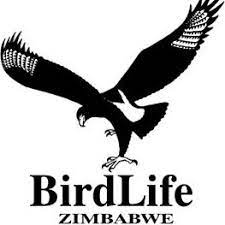IMPORTANT BIRD AREAS
Z019 Save-Runde Junction
PARTIALLY PROTECTED
GLOBAL IBA (A2)
21°19’S; 32°26’E
c. 5 000 ha
SITE DESCRIPTION
Draining a huge part of eastern and south-eastern Zimbabwe are two important rivers, the Save (formerly Sabi) on the east, rising on Charter Estate about 70km due south of Harare, and the Runde (previously Lundi) in the south, rising at Gweru. Eventually, these two rivers meet in southeast Zimbabwe, to continue through Mozambique as the Rio Save. By the time the two rivers join, each is about 1 km wide, consisting of sandy riverbeds between terraces of riparian woodland. The Save River, in particular, is heavily silt-laden from its journey through the Communal Lands of the Buhera District. The junction is the lowest point in the country, being about 180 m a.s.l. It is oppressively hot by the end of the dry season. The average rainfall is 400 mm p.a.
Between the two rivers and close to their junction is the Tembwehata Pan which, in wet years, can flood to a diameter of 2 km or more. Tembwehata Pan is fringed by fever trees Acacia xanthophloea. South of the Runde and 8 km west of the junction is Machiniwa Pan, which is not a permanently marshy area like Tembwehata, and is fringed by Baobabs Adansonia digitata. The rivers flow between terraces (two on each bank) which support a narrow belt of riparian woodland comprising species such as Trichilia emetica, Diospyros mespiliformis, Kigelia africana and a lower storey of Combretum and Acacia spp. The junction is set in Mopane Colophospermum mopane woodland and scrub. Close to the rivers are large numbers of Ilala palms Hyphaene natalensis, many of which show the impact of elephants. The Save River holds a long 5 km x 1.5 km island, which is longitudinally divided into National Park to the west and communal land to the east.
BIRDS
Occasional visitors to the junction are Cape Vulture Gyps coprotheres, Lesser Kestrel Falco naumanni, Corn Crake Crex crex and Southern Banded Snake-eagle Circaetus fasciolatus. Lemon-breasted Canary Serinus citrinipectus occurs in the Ilala Palm veld and it is suspected that Plain-backed Sunbird Anthreptes reichenowi is also regularly present. Taita Falcon Falco fasciinucha has been claimed from the area, but the nearest known breeding site is at Mount Rudd, 150 km due north, so these records need confirmation.
To date the has at least 357 species on the checklist for the area. The junction has affinities with the East African Coast biome. For example, Brown-headed Parrot Poicephalus cryptoxanthus, Senegal Lapwing Vanellus lugubris, Gorgeous Bush-shrike Telophorus quadricolor and Southern Brown-throated Weaver Ploceus xanthopterus occur here. In addition, Livingstone’s Turaco Tauraco livingstonii, Lesser Seedcracker Pyrenestes minor and possibly even Barred Long-tailed Cuckoo Cercococcyx montanus and Black-bellied Starling Lamprotornis corruscus may occur.
CONSERVATION ISSUES
The Runde River and west bank of the Save River are in the Gonarezhou National Park, and the east bank of the Save is in the Ndowoyo Communal Land of the Chipinge District, under the control of Chief Mahenya. The Communal Land is also devoted to sustainable utilisation of wildlife under the CAMPFIRE scheme and has hunting quotas for Elephant Loxodonta africana, Buffalo Syncerus caffer and Lion Panthera leo. The junction is well protected on one side under the Parks and Wild Life Act, and by the wildlife conservation attitude of the Communal Land on the other. The major issues are the silt load in the Save River and the high Elephant density in the National Park. Poaching occurs, Black Rhinoceros Diceros bicornis was eliminated and there has been heavy poaching of Elephant in the past. The international border with Mozambique is fenced and has a minefield along it. There is a safari lodge at Chilo Gorge devoted to non-consumptive tourism.
Globally threatened
* Cape Vulture – Breeding (pairs) – | Total Numbers – OV
* Lesser Kestrel – Breeding (pairs) – | Total Numbers – OV
Globally near-threatened
* Southern Banded Snake-eagle – Breeding (pairs) – | Total Numbers – OV
RR & BRA | STATUS
Southern Banded Snake-eagle | Rare
Brown-headed Parrot | Common
Gorgeous Bush-shrike | Common
Lemon-breasted Canary | Common
* – Species does not meet IBA threshold
RR & BRA – Restricted-range and Biome-restricted Assemblage
OV – Occasional visitor
